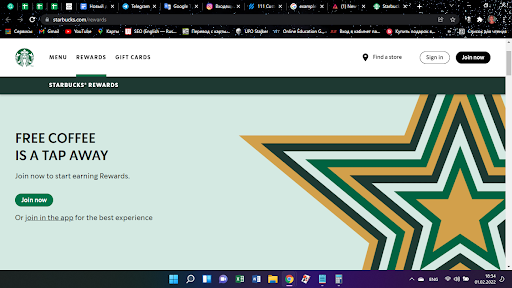
How to Build Customer Trust and Loyalty Using Technologies in 2025
Building customer trust and loyalty are definitely in the TOP-5 list of goals that should be achieved by successful businesses. You can just sell products and services, but building a relationship will bring your company to the next level.
Thankfully, technology is here to help you reach people’s souls, touch on their pain points, and meet their needs. All that will establish loyal and trusting relationships between you and every buyer interested in what you offer.
Why Building Customers’ Trust and Loyalty Matters
First of all, customers tend to only trust credible businesses. So, it’s very beneficial for your reputation and brand awareness to make sure at least 9 in 10 buyers are satisfied and consider coming back.
But if you want numbers, it will cost you 5 times more to acquire a new customer than to retain an existing one. According to the same source, sales success is 60-70% if you’re trying to encourage a retained client to buy.
If we’re talking about a new buyer, the success rate is only 5-20%.
And there’s even more! A tiny 5% increase in retention rate can make your revenue grow by 25-95%, depending on the case.
So, we can agree that building relationships with people who buy from you is quite important.
How Technologies Improve Customer Trust and Loyalty
Customer loyalty goes beyond regular buyer retention. In the latter, you have to do something to make a person want to come back.
When it comes to loyalty, you create an environment. Everything is already done, and a person consciously decides to buy from you again, subscribe to a newsletter, write a review, recommend your brand to a friend, etc.
To build a relationship, the company needs to express empathy to its customers. But that’s not all.
Technology has been a driving force in recent years. Its main goals are:
- Touching on and easing pain points
- Providing a high quality of support
- Reducing the effort needed to use your website, get help, buy from you, etc.
Some of the most common problems consumers have are:
- Long wait times – when it takes an eternity to hear from the support team, load a website, etc.
- Poorly trained operators – one thing worse than waiting for a long time to get a basic reply is to get a senseless, unhelpful one quickly.
- Cold communication – that’s where empathy plays a deciding role in whether the person will come back and become your advocate.
The key is to combine both warm and efficient experiences to ease all the pain points of your target audience.
A basic yet great example of a company using tech to its benefit is Starbucks. It seems they have no shortage of customers, but the company still cares about garnering loyalty and rewarding their buyers.

By joining the Rewards program, you can order easily in advance to save time, receive free coffee and food, etc. Each purchase gives you a certain number of points you can accumulate to get free stuff.
Plus, the app sends push notifications to encourage people to get more points.
And for everyone using the app for the first time, there’s a free drink. No surprise the company is so popular, with 241 establishments in New York alone.
Another giant using technologies to encourage customer loyalty is Amazon. They use AI to personalize buyer experiences, analyze patterns, and predict behaviors, achieving a deep connection with consumers and making them feel understood.
Technologies That Help Build Customer Trust and Loyalty
The word ‘technology’ has a broad meaning, so what exactly boosts customer trust?
We’ve identified the 9 Factors:
– Data-driven customer approach
First and foremost, there’s data you can gather about your customers (current and potential). By collecting what you can during every interaction between your brand and its users, you get to know them.
What’s more, you can learn how to understand your overall target audience better by analyzing their queries and search intent using digital tools such as SEO Trends. When you miss an opportunity to learn about the behaviors of people interested in your products and services you miss out on loyal buyers that will trust you.
Use the acquired data to predict behaviors, recommend the right products, answer the right questions, and be on the same page with your customers.
– Customer data security
Nowadays, the scale of data consumers provide is enormous, from their name and age to location tracking. On the one hand, it’s an amazing opportunity to learn more about your target audience, the perfect buyer, etc.
On the other hand, there comes the responsibility for storing, using and keeping that data safe.
According to McKinsey’s survey, no industry has gotten a trust rating of 50% for data protection. So, one of the reasons people don’t trust businesses is because they’re concerned about their personal data.
And it’s understandable, considering the number and scale of data breaches we’ve seen in recent years. According to the same source, 87% of consumers said they wouldn’t opt for a business they feel insecure with in terms of data protection.
So, what to do?
– Data mapping
The solution helps a lot with volumes of incoming data and its cataloging.
– Identity and access management
Using tech to control identity and access management is also a good idea since most of the data breaches we’ve seen in recent years may have been performed by insiders.
– Customer-end safety
Timed log-outs, two-factor authentication, and recommendations for the strongest passwords will all improve data safety and customer loyalty.
– Artificial Intelligence
You can be like Amazon and use AI to improve customer experience. The most common thing AI is used for nowadays is chatbots. They’re very helpful when it comes to supporting visitors and buyers. A chatbot offers 24/7 availability for everyone, ready to answer basic questions.
As a result, you don’t have to hire night shift staff yet can provide consumers with top-tier service by being polite, warm, and efficient for them around the clock.
AI will also gather information, analyze it, and inform you about buyer behavior, interaction patterns, and more so that you can enhance user experience and make it more intuitive.
Another aspect artificial intelligence is helpful with is product design. Natural Language Processing, deep learning, computer vision, and other advanced technologies will gather and analyze data about your existing products, offering you clear guidelines for creating future lines that will resonate with your customers. Manufacturing what people want will definitely boost customer trust.
– Customer support software
76% of customers want a consistent experience, no matter what channel they use to communicate with a brand. This brings us to one more advancement – omnichannel customer service and support.
Being able to contact a company across platforms and channels and get wholesome support builds trust and reduces effort from the customer’s side.
Add friendly, informative chatbots, reliable, secure software, and trained operators here, and you’ll have the key to perfect buyer support which is, in turn, an important factor of CX.
– Virtual and augmented reality (VR and AR)
If you want to create an innovative, memorable experience for your customers and enhance their loyalty, don’t overlook virtual and augmented reality. You can offer people to shop using VR glasses, creating nostalgia for in-store experiences that moved to the background with the beginning of the pandemic.
Call it a bridge between eCommerce and physical shopping.
Such technologies can educate people about your business, products, and their usage, the value of your services, etc. By collecting data from such journeys, you can closely analyze buyer behavior and meet even more expectations.
Plus, achieving such a strong emotional connection with your visitors will pay off. Immersive experiences cause strong emotions, leading to positive impressions (if the technology works well). This will definitely help you create a base of loyal customers who will be ready to refer the company to their networks.
– Voice capabilities
111.8 million people in the US use voice search. The tendency is increasing in recent years, which impacts the eCommerce world as well. To provide a more intuitive experience and garner trust from people loyal to your brand, you can gather and analyze audio data to offer the best solutions immediately.
In the future, the common chatbots we know and love may be replaced with smarter ones with voice recognition features. Speech analytics will also rise in popularity and demand, making it possible for companies to understand their clients on a new level.
To Summarize
Using technology to boost customer trust and loyalty is crucial if you want to have a successful business. Consumers’ demands increase and diversify year after year, and top-tier security, artificial intelligence, voice search, as well as other types of tech will help you keep up with those demands and meet them perfectly.



